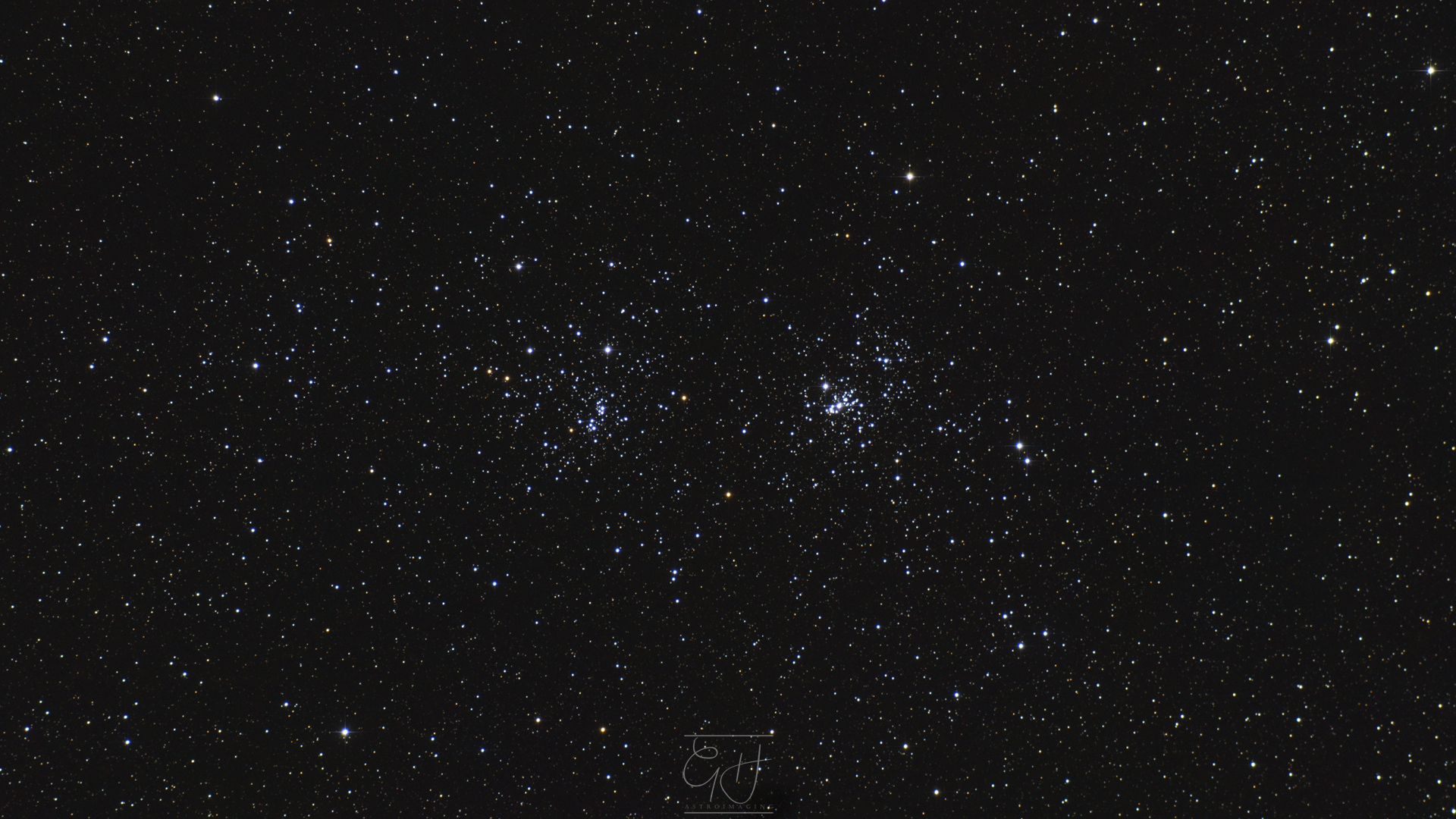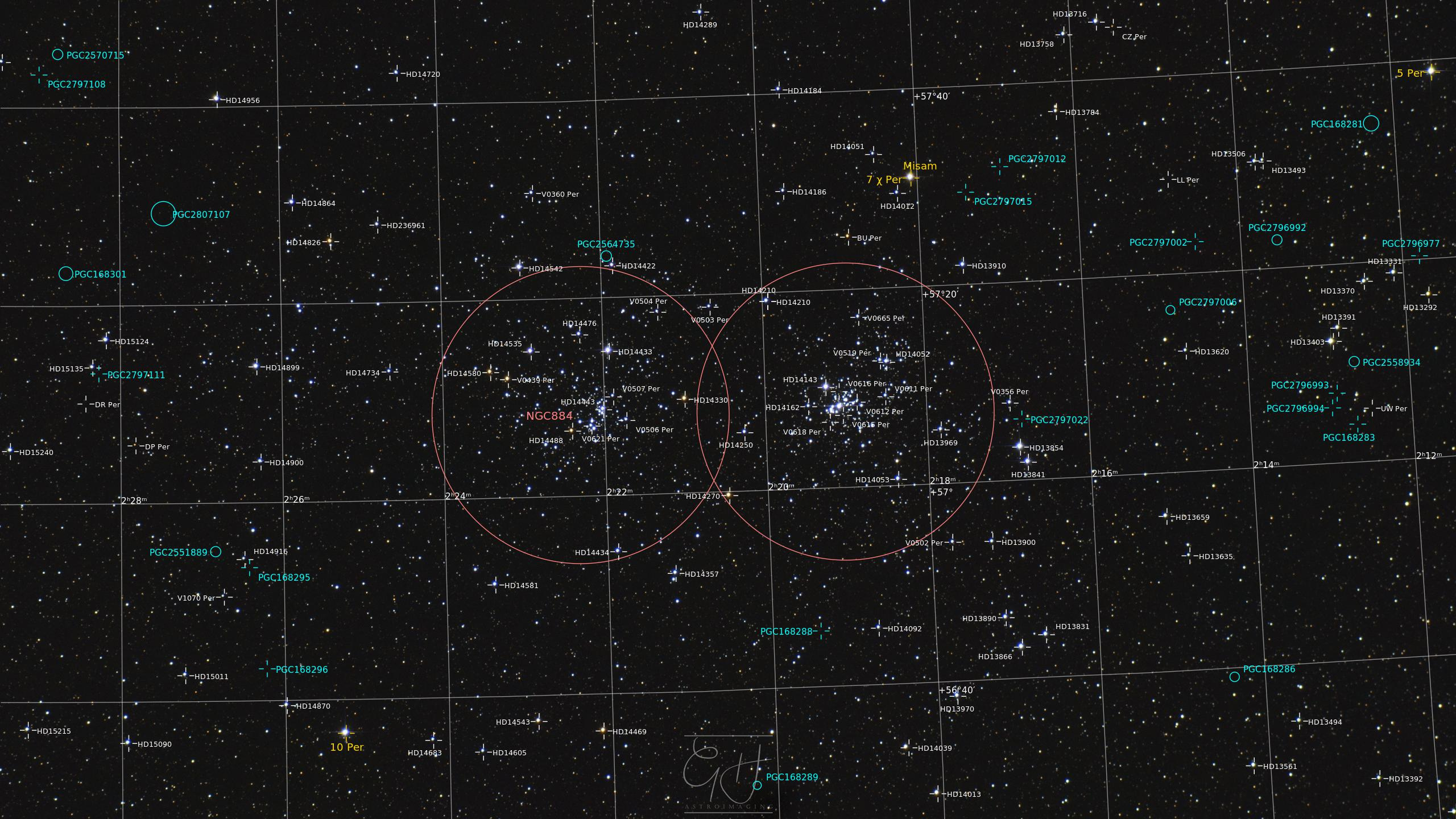The Double Cluster, March 4 2020


The Double Cluster comprises the two open clusters NGC869 & NGC884 and is found in the constellation Perseus. With dark skies, this object can be seen by the naked eye.
The 2 clusters depict the jewels on the hilt of the sword of Perseus in most representations of the constellation artwork.
More information about this object can be found on its Wikipedia page.
In some ways this image could be described as an easy target. Capturing star clusters isn't as sensitive to light pollution as is the case for most nebulae, and it's generally a good idea to stick with shorter exposure times for individual shots to avoid oversaturating the brighter stars and losing any colour information from them. The flip side of this is that many more individual exposures are needed to reach similar overall integration time as with nebula images in order to achieve a nice smooth background, so the processing can take a bit more time as the computer has many more frames to align.
You may notice on some of the brighter stars in this image that there are some spikes. In this case, they have been artificially added in software because I do think they add a little interest to the image. You may sometimes see some images with spikes that are a natural consequence of the type of telescope they are taken through. Newtonian reflectors for example have a 'spider' that carries the secondary mirror and the vanes that support this cause diffraction lines on bright objects in view. Adding spikes artificially can be a bit tricky to get right - overdo the effect and it looks really terrrible. I hope I've managed to add just enough to add interest to this image without making it look too 'fake'.
You can view this image in the WorldWideTelescope by clicking here.










Sign in to enable commenting